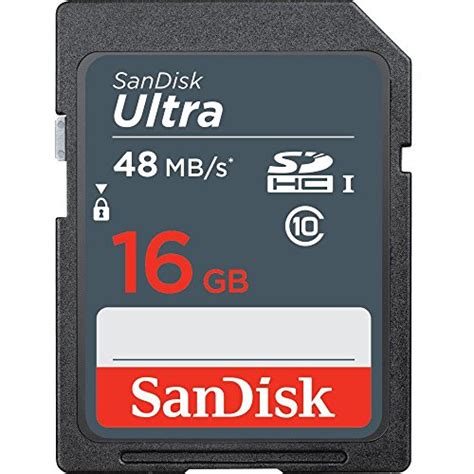
Excel is a widely used spreadsheet program. While it’s most popularly known for its ability to make use of heaps of data, Excel has an infinite number of capabilities, from making lists and charts to organizing and tracking information.
Whether you want to do XLOOKUP, COUNTIF, CONCATENATE or simply merge cells, we’ve got you covered with step-by-step guides to the most important tools, formulas, and functions in Excel.
90% of offices use Excel. Getting Excel-certified can be highly beneficial for job seekers. Get certificates in multiple Excel courses to prove your proficiency in Excel.
Learning Microsoft Office has significant benefits for your daily workflow, productivity, and career possibilities. Microsoft Office skills are indispensable across a plethora of industries and professions.
Looking for help with Microsoft Office? Check out our free guides with tips on how to maximize the potential of apps like Word, PowerPoint, Teams, Excel and more!
Lean Six Sigma provides a structured problem-solving methodology that can be used to address any type of problem. Being able to find and fix problems will improve your ability to perform in any position and industry.
Deepen your understanding of popular LSS tools and techniques, and simplify complex LSS concepts with our thorough how-to guides and resources.
Lean Six Sigma certification can fast track your career and boost your pay packet. Certified Lean Six Sigma professionals are among the highest paid globally. Get trained in LSS!
Whether you are in HR, Sales, IT, Admin or Support, you need to speak the language of finance. Whether discussing plans, strategy or how well your department is performing, you’ll be conversing in financial terms and numbers.
From accounting software tips, to taxes and financial modelling techniques, our resource center has free guides to help you gain the finance knowledge you are looking for.
Project management jobs are in high demand with not enough skilled applicants to fill them. For qualified candidates, project management roles are available in almost every industry.
Explore our resource center to find templates to help you get the job done, job interview tips, insights to tackle your biggest project management challenges, and so much more.
It pays to be certified in project management. You need to complete 35 hours of PM training from an ATP to get your certification. We can help you meet that requirement.
How successful could you be if you were more productive? Master widely-used productivity tools like Trello, Todoist, and Google Drive to optimize your workflow and spend time doing the work that truly matters. Start getting things done!
Having difficulties adjusting to remote work? Need help with work-life balance? Need tips on how to use tools like Zoom or Slack effectively? Try these resources!
Good leaders employ a comprehensive set of hard and soft skills to act as the oil of a well-functioning machine. While some of these traits are expressions of their inherent personality, most are learned and refined over time.
Finding yourself in need of simple tools and guidance to navigate through challenging situations as a leader? Take a look at our resources for management tips and strategies that you can implement right away.
Soft skills matter a lot in the workplace. Here’s why. As the workforce grows more dependent on knowledge workers, companies are beginning to see the value in soft skills.
We want to help you succeed! Check out our resource center for help with your resume, job interviews, and your career. Let us help you put yourself ahead of the rest.
Learning to code could be your ticket to a lucrative and fulfilling career. High salaries, the flexibility to work from anywhere, and a healthy job outlook are just three benefits you can look forward to in this dynamic industry.
Check out our resource center to find answers to common coding questions, interview tips, and step-by-step guides that will help you in your development career.
If you want a job where you’ll be working on something different every day, thriving in a fast-paced environment and loving a creative challenge, a career in graphic design may be just for you.
Check out our resource guides to learn more about the graphic design tools that will help you to achieve your design dreams.
Become a data analysis pro with our range of expert-led courses. Whether you are a data analytics novice or a numbers whiz, our on-demand courses will help advance your skills at a pace that suits you.
From Python to Excel, or Power BI, Tableau and beyond, check out these free resources to help take your data analysis skills to the next level.
Everything you need to know to get started with Microsoft Excel.
If you find Excel intimidating, you are not alone.
When it comes to Excel, many of us lack the skills to find the answers we need.
And it’s no secret that subpar Excel abilities could seriously impact your career.
If you work in a non-technical sector, you may wonder why it’s relevant to learn Excel online.
Excel is, in fact, a skill that touches about every profession out there, at every level.
Improving your Excel skills will not only help you get your work done faster, it can also improve your career prospects.
Certified Excel skills have been found to increase the likelihood of promotions and lift earnings by 12% on average compared to the paychecks of non-certified users.
That’s why I learned Excel. And you should too.
Although number crunching is what Excel is known for – its capabilities lie far beyond that. With Excel, you can:
Excel can also help you out in your personal life through expense tracking worksheets, party planning templates, and more.
Interested, but don’t know where to start?
We’ve got you covered.
This overview will guide you through the basics of Excel and teach you how to level up your productivity with key formulas and functions, filtering, macros, and more. We’ve also included 50+ free resources at the end that will help you learn Excel online!
Microsoft Excel is the most widely used spreadsheet program in the world. While it’s most popularly known for its ability to make use of heaps of data, Excel has an infinite number of capabilities, from making lists and charts to organizing and tracking information.
Just about everyone, in so many different ways. Excel is used in virtually every industry, including finance, retail, healthcare, communications, information technology and many more. Excel also comes in handy for personal use to manage your finances, organize your job search, or even plan out a novel! If you’re entirely new to Microsoft Excel, here are some resources you may find useful:
Before you jump into learning cool things like Macros and Power Pivot, it’s important to get your bearings first.
A Microsoft Office Excel workbook is an xlsx (if you’re using Excel 2007+) file that contains one or more worksheets that you can use to organize different types of related information, according to Microsoft.
Worksheets are comprised of a near infinite number of rows and columns, which together create cells.
Cells are where you store your information, such as text, numbers, pictures, dates, times and formulas.
You’ll notice the rows are numbered while the columns are labeled with letters. An example of a cell label (or reference) then is: A2, H5, etc.
To get things done in Excel, you’ll need to understand the Ribbon.
Excel’s quick access toolbar (see screenshot below) gives you one-click access to the tools you use the most in Excel.
You can customize what appears here by clicking on the arrow icon furthest to the right in the left-hand corner.
The ribbon is a collection of icons at the top of your workbook to help you perform specific actions. Think of the ribbon like a hierarchy, where each tab (e.g. Home, Insert, Page Layout) contains a group of commands (e.g. Copy, Paste, Sort, Filter).
Let’s dive deeper into each of these items.
The ribbon (see screenshot) is where you find commands. It’s broken down into clickable tabs, where you’ll find groups of related commands.
It’s important to note that your Excel Ribbon may appear different from my Excel Ribbon. There are a few reasons this could be.
1. Add-ins: Add-ins extend Microsoft Excel’s capabilities, and therefore, require a new tab.
2. Contextual Tabs: There are also contextual tabs – or a tab that appears automatically when you do something specific in Excel.
3. Customization: To make Excel work for you, you can customize your Ribbon, adding and/or removing different tabs.
Depending on which tab you click – home, insert, page layout, etc. – different command groups will appear below.
Excel is a powerful and robust program that allows you to accomplish a myriad of things, such as organizing, analyzing, presenting and even automating your data.
Using spreadsheets is usually a three-step process:
Enter data
Do something with the data
Interpret that data
And occasionally, there is a step four:
Automating the process
Before doing something with your data, try stylizing your spreadsheet so it’s easier to navigate. Here are a few things you should know how to do in Excel.
While formatting is essential for easy reading, it’s not the only benefit of the feature.
Ever heard of conditional formatting? Conditional formatting turns things up a notch by styling cells based on what’s in them.
For example, in the example above, we have a spreadsheet with a list of distilleries and the dates they were founded. If I’m interested in visiting the oldest distilleries, I can use the conditional formatting feature to highlight the oldest three in my sheet.
If Excel doesn’t have the option you want already, you can build your own style.
It’s important to note that the style you choose will be applied to every selected cell, so pay attention to the cells you’re selecting because it may affect how the style appears.
We actually touched on this in an article. Here’s an excerpt:
There’s nothing worse than scrolling through a huge spreadsheet that requires you to continuously go back up to the top to see what your column headers are.
Fortunately, you can make your column headers and your row numbers stay right where they are – meaning you can always see them, no matter how far down the spreadsheet you go. You can do this by using Excel’s handy “freeze panes” feature.
Here’s how you do it:
Scroll down and across your spreadsheet, and you’ll see that the information you need is always right there within view!
One of the reasons Excel is so widely used in the business world is because it allows you to do advanced calculations and build business intelligence solutions out of it.
In order to do that, you need to understand formulas and functions. Formulas are the most basic way to do math in Excel.
Each formula begins with an “=” sign. How you begin each formula
If you want to add two numbers, you’d use the “+” sign. Add numbers
If you want to subtract two numbers, you’d use the “-” sign. Subtract numbers
If you want to multiply two numbers, you’d use the “*” sign. Multiply numbers
And if you want to divide two numbers, you’d use the “/” sign. Divide numbers
You can do what I did above – input the exact numbers – but that isn’t the optimal solution. Why? Because then you can’t copy and paste that formula into the remaining cells because the formula is hard-coded with numbers.
Here’s what I should’ve done instead:
Notice how I input the cell references instead of the actual numbers.
What if you want to do more complex math though? How would you do it?
Well, you’d utilize functions. Functions, which are categorized by functionality, are just predefined formulas. Here are some of the most common ones. You can find the full list here and also here.
Now that you have your data, you have to interpret it.
The thing is: it’s difficult to make sense of messy data. So you’ll need to visualize it first.
Here are a few ways you can make your data look better.
If you want to sort your data by column/category to make it more presentable, here’s how.
Well, you can do that. Here’s how.
Prepare your data to be sorted
Before you can sort your data, you must make sure that your data is ready to be sorted. Your data is ready to be sorted if the following is true:
How to do single level sorts
How to do multiple level sorts
Multi-level sorts are good for large data sets because you’ll likely want to sort your data by one column and then by another.
Filtering can be very useful for drilling down into data, finding only records that have specific relevance to the situation you are investigating.
To filter out duplicates, again, you must get your data ready to be filtered – make sure:
Filter for specific words
Filter for specific dates
Filter multiple columns
Clear filters in one of three ways
A Pivot Table is almost like a Rubik’s cube because it allows you to mold your data and look at it in different ways.
How to create a PivotTable
How to remove items from a PivotTable
How to modify PivotTables
For more PivotTable tutorials, check out our resources section below.
If you have tasks you need to do over and over again, you should use Macros and Scripts to automate this process.
A macro is a pre-recorded set of actions that you can replay as many times as you want, so you don’t have to manually take those same steps. You can record a macro for some of your most common tasks in Excel, and replay those actions to save you time.
Add the Developer tab to your ribbon (if it is not on your ribbon)
Prepare to record
Record a macro
Run the macro
You can run the macro in any one of three ways:
For more Macros and VBA tutorials, check out our resources section below.
This was a high-level overview, but the possibilities of Excel are endless, so don’t stop here.
We’ve gathered 50+ free Excel resources to keep you moving, including step by step tutorials, keyboard shortcuts, and time-saving templates.
If you’re looking for something more comprehensive, we’ve also included online courses that will help you learn and apply your new skills, fast.
Use these templates, shortcuts, and add-ins to work smarter and save yourself valuable time.
Make use of these Excel tutorials for beginners or those needing a refresher on the essentials.
Once you’ve mastered the basics, try your hand at learning these intermediate and advanced skills.
For more intermediate and advanced resources, see the sections below, organized into specific categories.
Learn how to use one of Excel’s most indispensable tools, the Pivot Table, to analyze and present your data in an understandable way.
Learn how to automate your most repetitive tasks by creating powerful macros with VBA.
Learn data visualization skills to design and build dynamic and beautiful Excel dashboards.
Learn how to use Power Query, a business intelligence tool within Excel that allows you to extract, clean, and reshape your data to prepare it for analysis.
Learn how to use Power Pivot, a business intelligence tool within Excel that allows you to transform large data sets into supercharged tables for data analysis and modeling.
More advanced Excel users who are working with tools like Power Query and Power Pivot to clean and analyze their data may also be interested in Power BI. You can import data from your Excel files into Power BI to build beautiful and interactive reports and dashboards.
We hope the resources above will help you in your quest to learn Excel online. Check out our resources section and sign up for our newsletter to get notified of new articles, tutorials, and webinars.
Ready to learn more about Excel and add a certification to your resume? Browse our online Excel courses today.
View Excel courses
Facebook Twitter LinkedIn Instagram
GoSkills - Skills for career advancement
Advance your career with GoSkills! We help you learn essential business skills to reach your full potential. Learn effectively via bite-sized video tutorials taught by award-winning instructors. Thank you for choosing to learn with us.
Don’t miss out on our best deals! Sign up for our newsletter to get the latest news and specials delivered direct to your inbox.
© 2022 GoSkills Ltd. Skills for career advancement
 Classic Accessories Veranda Water Resistant 11 Foot Patio Umbrella Cover
Classic Accessories Veranda Water Resistant 11 Foot Patio Umbrella Cover
 Sandisk 16 Gb Class 10 Sd Hc Ultra Flash Memory Card 10 Pack Bundle With
Sandisk 16 Gb Class 10 Sd Hc Ultra Flash Memory Card 10 Pack Bundle With
 Fairwin Braided Leather Dog Training Leash 6 Foot 56 Foot Military Grade H
Fairwin Braided Leather Dog Training Leash 6 Foot 56 Foot Military Grade H
 3m Reflective Dog Leash 5ft Long With Traffic Padded Handle Dog Training Leas
3m Reflective Dog Leash 5ft Long With Traffic Padded Handle Dog Training Leas
 How To Be Your Dogs Best Friend The Classic Training Manual For Dog Owners
How To Be Your Dogs Best Friend The Classic Training Manual For Dog Owners
 Classical Naptime For Tots
Classical Naptime For Tots
 Doggie Stylz Set Of 2 Reflective Therapy Dog In Training Removable Patches Wit
Doggie Stylz Set Of 2 Reflective Therapy Dog In Training Removable Patches Wit
 6 Pcs Service Dog In Trainingworkingstress Amp Anxiety Response Embroidere
6 Pcs Service Dog In Trainingworkingstress Amp Anxiety Response Embroidere
 Service Dog In Training Patch With Hook Back And Reflective Lettering For Servic
Service Dog In Training Patch With Hook Back And Reflective Lettering For Servic
 Four Paws Wee Wee Pee Pads For Dogs And Puppies Training L Gigantic Xl St
Four Paws Wee Wee Pee Pads For Dogs And Puppies Training L Gigantic Xl St
 Pny 128gb Elite X Class 10 U3 V30 Microsdxc Flash Memory Card 100mbs
Pny 128gb Elite X Class 10 U3 V30 Microsdxc Flash Memory Card 100mbs
 Academy Of Beasts V Shifter Romance
Academy Of Beasts V Shifter Romance














